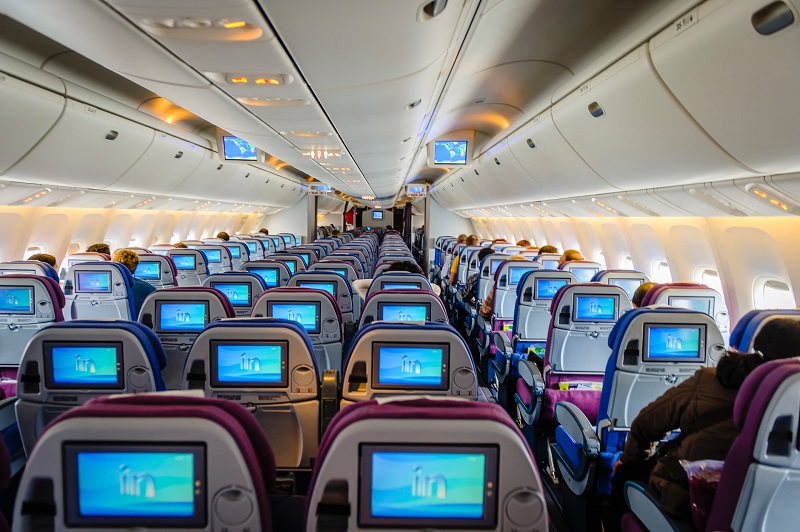Flying while pregnant can be a daunting experience for many expecting mothers. However, with the proper preparation and guidance, air travel during pregnancy can be safe, comfortable, and stress-free. In this ultimate guide, we will share tips and advice from prenatal experts and women who have frequently flown during their pregnancies.

Is it Safe to Fly While Pregnant?
Many expecting mothers wonder if flying during pregnancy is safe for themselves and their unborn child. According to the American College of Obstetricians and Gynecologists (ACOG), it is generally safe for women with healthy pregnancies to fly until 36 weeks of gestation.
However, it is important to note that every pregnancy is different, and some women may be at higher risk for complications. Therefore, it is crucial to consult with your healthcare provider before booking a flight.
Benefits of Flying While Pregnant
Despite the concerns surrounding air travel during pregnancy, there are also many benefits. For example, flying allows expecting mothers to attend important events or visit family and friends before the baby arrives. Additionally, traveling during pregnancy can be a great way to relax and enjoy some time alone or with a partner before the busy days of parenthood begin.
Air Travel Guidelines for Pregnant Women
When to Avoid Flying During Pregnancy
While it is generally safe for women with healthy pregnancies to fly, there are certain times during pregnancy when air travel should be avoided. These include:
- During the first trimester, when the risk of miscarriage is highest
- During the third trimester, when the risk of preterm labor is highest
- If you have a history of preterm labor, preeclampsia, or other pregnancy complications

Airline Policies for Pregnant Passengers
Most airlines have specific policies regarding pregnant passengers. For example, some airlines require a doctor’s note after a certain number of weeks of pregnancy or may limit travel during the third trimester. It is important to check your airline’s policies before booking a flight.
Traveling in the First Trimester
Traveling during the first trimester can be safe and comfortable for many women. However, it is important to be aware of the common symptoms of early pregnancy, such as nausea and fatigue. Pack snacks and stay hydrated to help alleviate these symptoms during the flight.
Traveling in the Second Trimester
Many women find the second trimester to be the most comfortable time for air travel. However, it is still important to take precautions to prevent blood clots and discomfort. See the section on “Preparing for a Flight While Pregnant” for tips on how to make your flight more comfortable.
Traveling in the Third Trimester
While it is generally safe to fly until 36 weeks of gestation, many airlines have restrictions on travel during the third trimester. It is important to check with your airline and healthcare provider before booking a flight. Additionally, it is recommended to avoid long flights and to request an aisle seat for more frequent stretching and bathroom breaks.
Preparing for a Flight While Pregnant
Packing Essentials for a Comfortable Flight
Packing the right essentials for your flight can make all the difference in your comfort level. Here are some items to consider packing:
- Snacks and water to stay hydrated
- A neck pillow or cushion for lumbar support
- Compression socks or stockings to prevent blood clots
- Loose-fitting clothing and comfortable shoes
- Earplugs or noise-cancelling headphones to block out noise
- Books, magazines, or other entertainment
Tips for Booking a Comfortable Seat
Booking a comfortable seat can make all the difference in your comfort level during the flight. Here are some tips for booking a comfortable seat:
- Request an aisle seat for more frequent stretching and bathroom breaks
- Choose a seat in the middle of the plane over the wing for the smoothest ride
- Consider paying for an upgrade for more legroom
Staying Hydrated During the Flight
Staying hydrated during the flight is crucial for preventing discomfort and reducing the risk of blood clots. Drink plenty of water throughout the flight and avoid alcohol and caffeine, which can dehydrate you.
Stretching and Exercise During the Flight
Moving around and stretching during the flight is important for preventing blood clots and reducing discomfort. Consider doing simple exercises such as ankle pumps or walking up and down the aisle every hour or so.
Managing Risks While Flying While Pregnant
Potential Risks of Flying While Pregnant
While flying while pregnant is generally safe, there are certain risks to be aware of. These include:
Radiation Exposure
Flying at high altitudes exposes passengers to increased levels of radiation. However, these levels are generally not considered harmful for occasional air travel.
Blood Clots
Pregnant women are at an increased risk of developing blood clots, especially during long flights. However, there are simple precautions you can take to reduce this risk, such as wearing compression socks and moving around frequently.
Dehydration
Dehydration can be a common issue during air travel, especially for pregnant women. Be sure to drink plenty of water throughout the flight and avoid alcohol and caffeine.
Air Pressure Changes
Air pressure changes during takeoff and landing can cause discomfort, especially in the ears. To alleviate this, chew gum or suck on hard candy to help equalize the pressure in your ears.
Minimizing Risks While Flying While Pregnant
While there are certain risks associated with flying while pregnant, there are also many ways to minimize these risks. Here are some tips:
Consulting with a Healthcare Provider
Before booking a flight, consult with your healthcare provider to ensure that air travel is safe for you and your unborn child. Your provider may also recommend certain precautions based on your individual needs.
Wearing Compression Socks
Wearing compression socks or stockings can help prevent blood clots during long flights. These garments apply pressure to the legs, which helps promote healthy blood flow.
Moving Around on the Flight
Moving around and stretching during the flight is important for preventing blood clots and reducing discomfort. Take frequent breaks to walk up and down the aisle, and perform simple exercises such as ankle pumps or leg stretches.
Staying Hydrated
Drinking plenty of water throughout the flight is crucial for preventing dehydration and maintaining overall health. Avoid alcohol and caffeine, which can dehydrate you.
International Travel While Pregnant
International Travel Guidelines for Pregnant Women
When planning international travel during pregnancy, there are additional factors to consider. These include:
- Ensuring that your destination has adequate healthcare facilities in case of an emergency
- Checking for any travel advisories or disease outbreaks in the area
- Obtaining any necessary vaccinations before traveling (consult with your healthcare provider)
- Packing a copy of your prenatal records and a letter from your healthcare provider confirming your fitness to fly
Managing Long Flights While Pregnant
Long flights can be particularly challenging for pregnant women. Here are some tips to make your long flight more comfortable:
- Book an aisle seat for easier access to the restroom and more opportunities to stretch your legs
- Wear compression socks or stockings to prevent blood clots
- Bring a neck pillow or cushion for lumbar support
- Stay hydrated by drinking plenty of water throughout the flight
- Move around frequently and perform simple exercises to promote healthy blood flow
Coping with Jet Lag While Pregnant
Jet lag can be especially challenging for pregnant women, as it can exacerbate common pregnancy symptoms like fatigue and insomnia. To minimize the effects of jet lag:
- Adjust your sleep schedule a few days before your trip to gradually acclimate to your destination’s time zone
- Stay hydrated and avoid caffeine and alcohol during your flight
- Expose yourself to natural sunlight upon arrival to help reset your internal clock
- Take short naps if necessary, but try to establish a regular sleep schedule as soon as possible
Reasons Not to Travel While Pregnant
High-Risk Pregnancies
If you have a high-risk pregnancy or a history of pregnancy complications, your healthcare provider may advise against air travel. Always consult with your healthcare provider before booking a flight to ensure that it is safe for you and your unborn child.
Medical Conditions That May Affect Travel
Some medical conditions may make air travel more challenging or unsafe during pregnancy. These include:
- Gestational diabetes
- Severe anemia
- Placenta previa
- History of preterm labor
If you have any of these conditions, consult with your healthcare provider before planning any air travel.
Traveling Alone While Pregnant
Traveling alone while pregnant can be a challenge, especially during the later stages of pregnancy. Consider asking a friend or family member to accompany you on your trip, or plan shorter trips that are closer to home.

Conclusion
Final Thoughts on Flying While Pregnant
While there are certain risks and challenges associated with flying while pregnant, proper preparation and precautions can help ensure a safe and comfortable journey. Consult with your healthcare provider before booking a flight, and follow the tips and advice provided in this ultimate guide to make your air travel experience as enjoyable as possible.




Be the first to comment